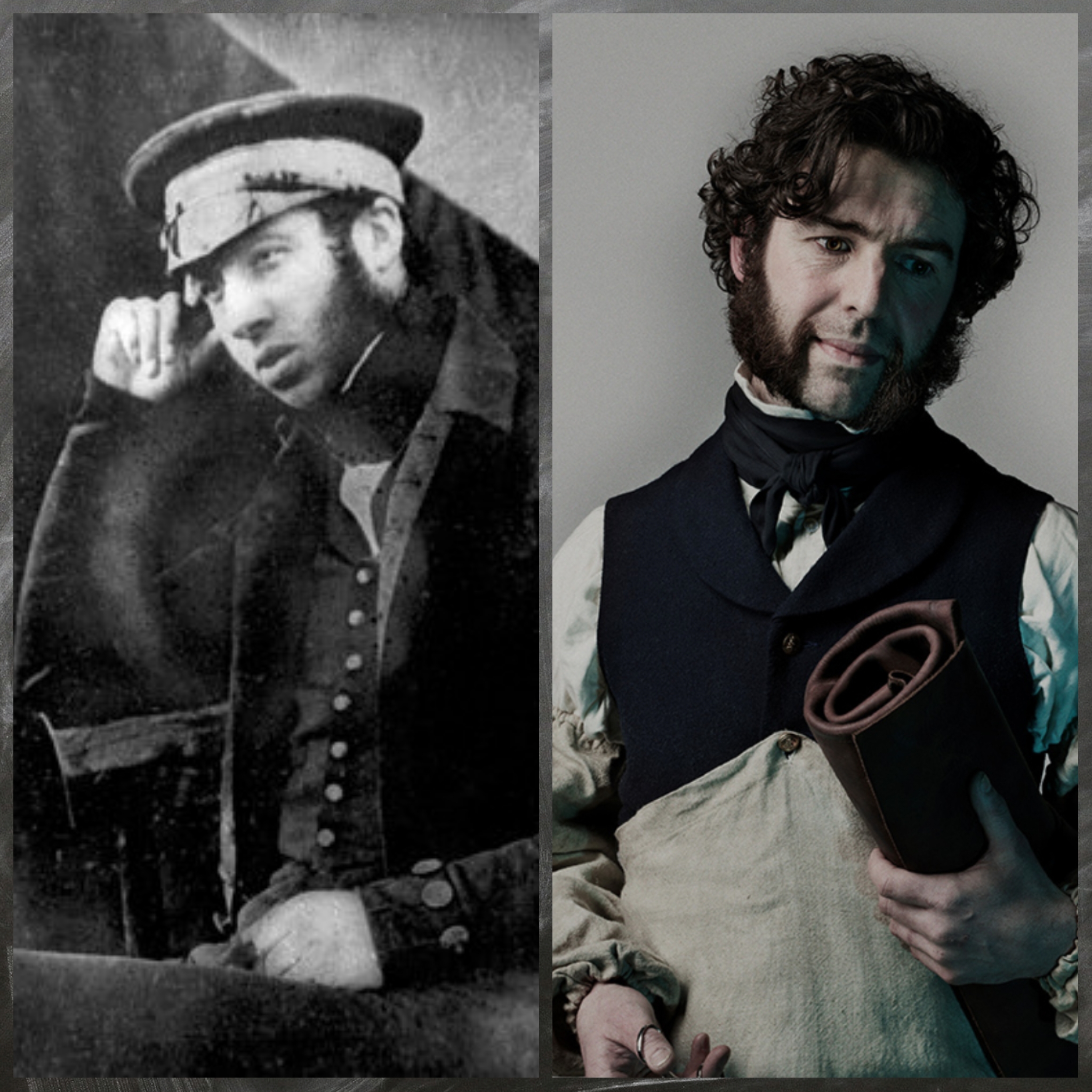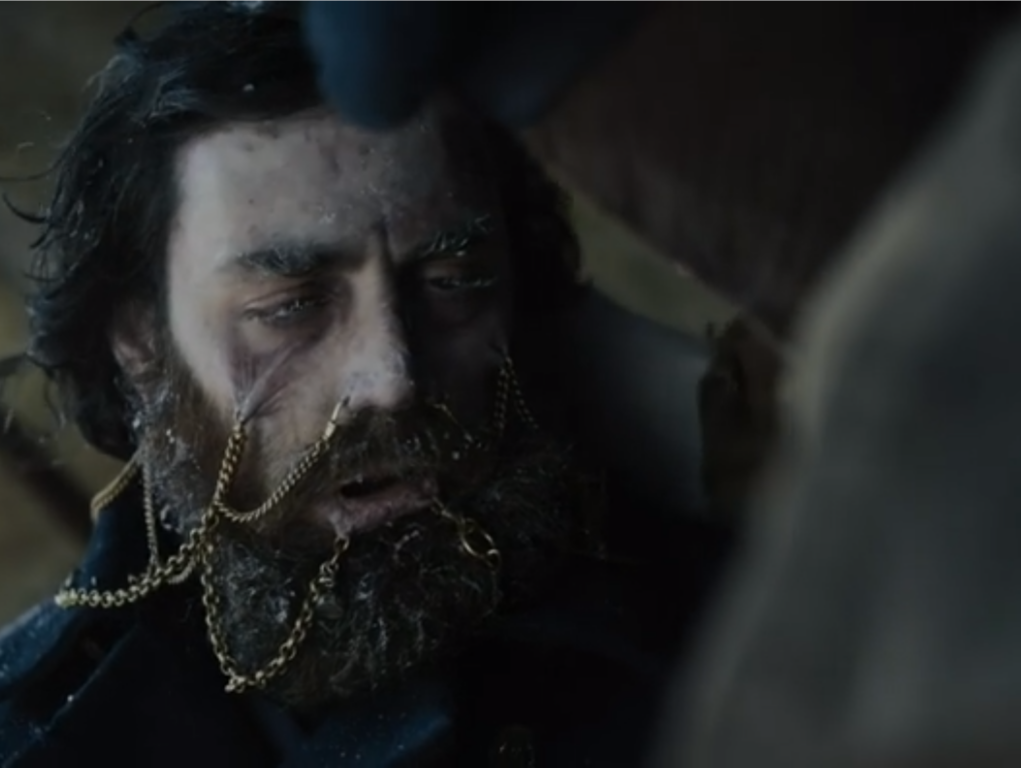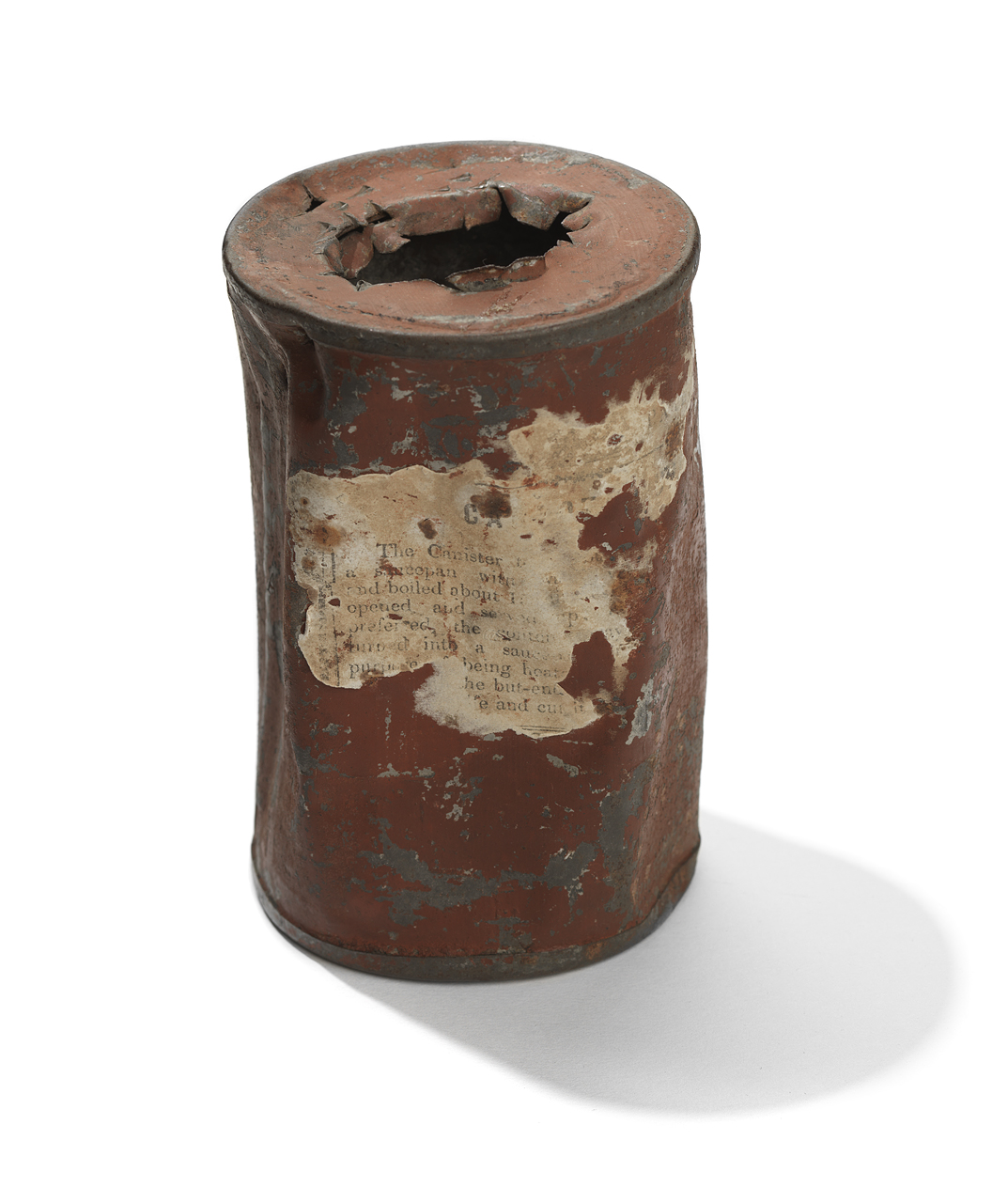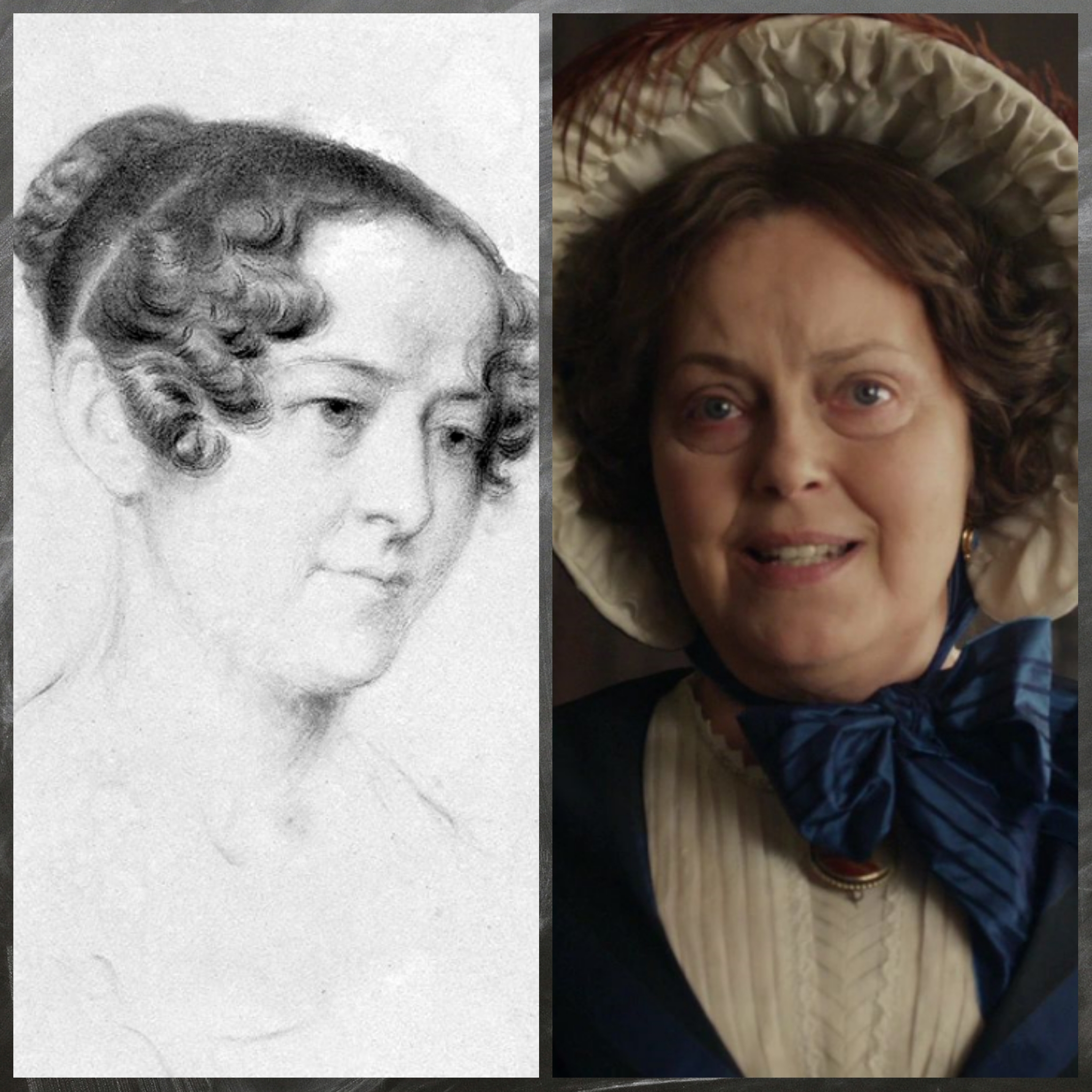The early 1800s saw a massive global endeavour to circumnavigate the world. Naval technology was improving and every successful expedition improved cartography and in many cases opened up new trade routes. The British Admiralty was especially interested in discovering a potential passage over and around Northern Canada that would expand trade routes to Asia. To that end, they commissioned several expeditions to the Canadian Arctic.
One of the most famous of these expeditions was the Franklin Expedition, or as it’s more commonly known ‘Franklin’s lost expedition’. You won’t be surprised to learn that it is so named because it was in fact lost. A hundred and twenty-nine men set out under the command of Sir John Franklin in the hopes of finding the final piece of the elusive Northwest Passage. They sailed on two ships that had made several similar expeditions between them; the HMS Erebus and the HMS Terror. They were never seen again and all of them were found to have perished in the Canadian Arctic. The shipwrecks themselves weren’t discovered until recently; Erebus in 2014 and Terror in 2016.
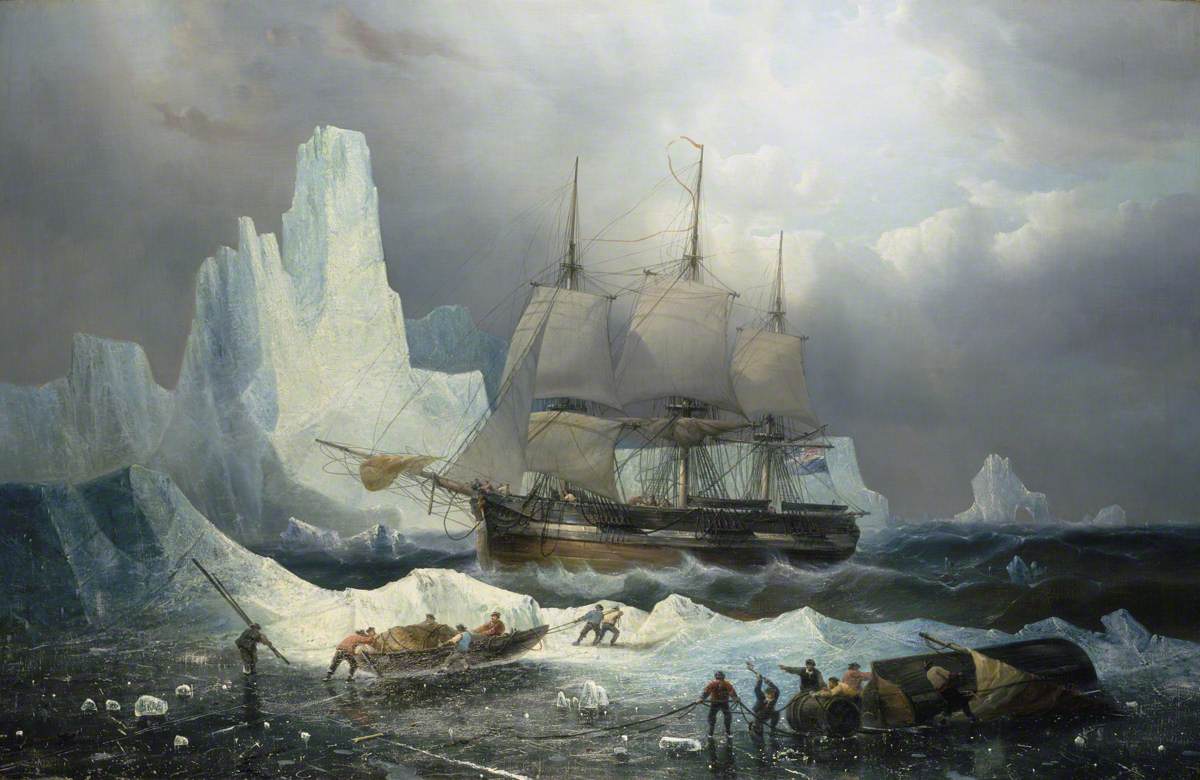
Dan Simmons’ The Terror follows the expedition with a twist of horror, despite the innate horror of men starving to death slowly on the ice. The crew are stalked by an animalistic spirit; the Tuunbaq. The Tuunbaq strikes (wait for it) terror into those who see it and devastates the crew of both ships, killing them off but not indiscriminately.
The Terror is a book and a television series and personally, I love it. It has everything I could ever want; sailing ships, cannibalism, dread, Jared Harris, and history. We don’t know exactly what happened to the expedition after they were last sighted by European whalers in 1845 and while I’m not suggesting that the men were lost to a bear-like spirit, the characterisation is so on point with what we know of the men involved to make their reactions believable.
Sir John Franklin: The Man who ate his Shoes
He was – and would always be – the man who ate his shoes.
The Terror – Dan Simmons
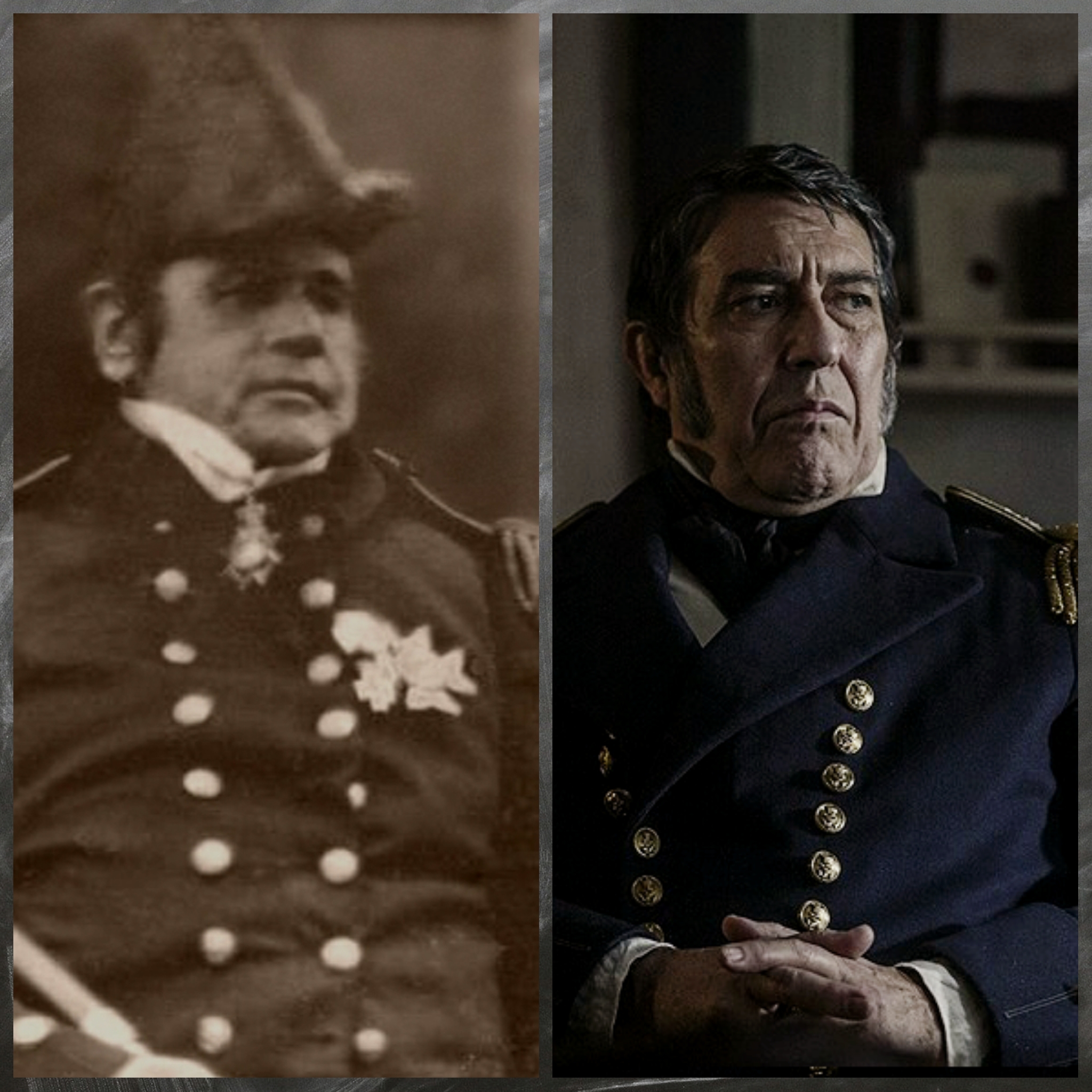
In The Terror the leader of the expedition, the one from whom it takes its name; Sir John Franklin, was nobody’s first choice to lead it. He is somewhat pompous and consistently trying to distance himself from the rather unfavourable nickname; “the man who ate his shoes”. Both of which were true of the real John Franklin with some flourishes for fiction.
Franklin was indeed nobody’s first choice to lead the expedition. Between them, the Lords of the Admiralty had three men in mind to take command. Sir John Barrow, who had promoted several Arctic expeditions and had been the main driving force behind this one, wanted James Fitzjames to lead but was unable to convince his colleagues of the appointment. The First Lord of the Admiralty, Lord Haddington, wanted Francis Crozier but there were several factors that counted against him, not least of all that he himself turned the role down. Everyone else wanted Sir James Clark Ross, another experienced and far more publicly honoured Arctic explorer, but he gave numerous excuses as to why he wouldn’t be able to take up the position. He threw his not inconsiderable support behind Sir John Franklin who would ultimately be given command with Crozier and Fitzjames in support.
This was not done out of reluctance or pity. Franklin was a renowned Arctic explorer despite his failure during the earlier Coppermine Expedition which had indeed led to him and his few surviving companions eating their shoes. While nobody’s first choice, he was a strong second and had a mighty need to prove himself. This was less to distance himself from the unfortunate instance with his boots but a more recent shadow where political intrigue had seen him ousted from the position of Lieutenant Governor of Van Diemen’s Land.
Francis Crozier vs James Fitzjames
With Sir John Franklin in command of the expedition from the HMS Erebus, command of the HMS Terror was given to the impressively named Captain Francis Rawdon Moira Crozier. Franklin’s second aboard the Erebus was Commander James Fitzjames who was promoted to captain after the expedition had begun; news which never actually reached him.
Even though Crozier was the expedition’s second in command, many of his duties were given to Fitzjames, something which is thought to have caused him some consternation. Crozier was an experienced explorer, having just returned from the successful Ross expedition which had also seen him in command of the Terror. Shortly after this return, he was elected a Fellow of the Royal Society in recognition of his work in magnetism. Despite this, it was Fitzjames, almost twenty years Crozier’s junior and with no polar experience, who was given the responsibility of the expedition’s scientific mission which was wholly based on research into magnetism. He was also put in charge of recruitment, all of which were responsibilities that should have gone to Crozier.
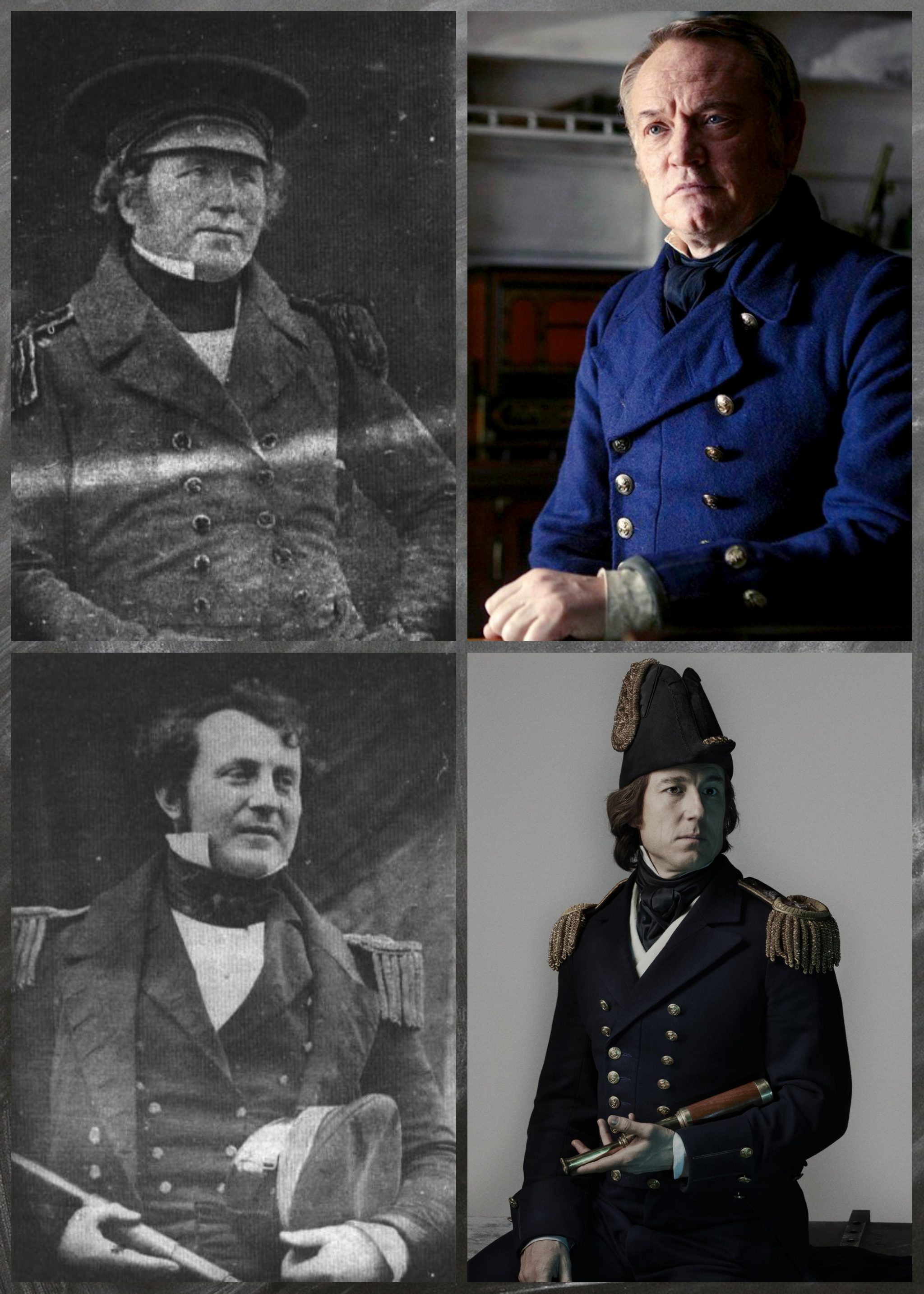
The reasons why it didn’t were the same reasons that counted against him when it came to selecting a leader for the expedition. Francis Crozier might have been a competent Captain and solid explorer but he was not a gentleman in the societal sense of the word. While he was named for the Earl of Moira, a close friend of his father’s, Crozier’s father was a solicitor. Further, he was Irish and to top it all; he wasn’t a part of the Anglican Church of England. All of this counted against him far more than the fact that Fitzjames was illegitimate. Fitzjames at least had a respectable foster family and numerous friends high up in the Admiralty.
The Terror shows a recalcitrant Crozier, critical of Franklin’s leadership and in frequent dispute with Fitzjames. None of this is helped by Crozier’s increasing alcoholism. It’s difficult to discern whether Crozier was an alcoholic when such things aren’t explicitly referred to in the historical record but his reluctance to join Franklin’s table when invited is well documented.
In his letters to his wife, Franklin refers to how little Crozier puts in an appearance to dine with the officers aboard Erebus despite both the repeated invitation and also his duty. At the time, refusing to dine at the captain’s invitation was considered one of the greatest snubs somebody could inflict upon a captain of the Royal Navy. Crozier might have had a number of reasons to avoid these dinners. Firstly, it involved an uncomfortable journey between the two ships in a rowing boat. Then there was the bad feeling that existed between himself and Fitzjames. Crozier’s own letters reveal that he wasn’t entirely enamoured with Franklin’s leadership decisions and we know that Franklin, a relentless host, spent many dinners affirming his mistreatment on Van Diemen’s Land. He was writing a pamphlet on the subject to restore his name and brought repeated drafts and ideas to his table. Crozier might simply have been trying to avoid the repeated scenes but his refusal to attend was attributed to his seemingly perpetual low spirits.
Francis Crozier and Sophia Cracroft
Crozier, on the other hand, as he discovered both in Van Diemen’s Land in 1840 and again for the final time in England in the months before this expedition sailed, is too old for romance. And too Irish. And too common.
The Terror – Dan Simmons
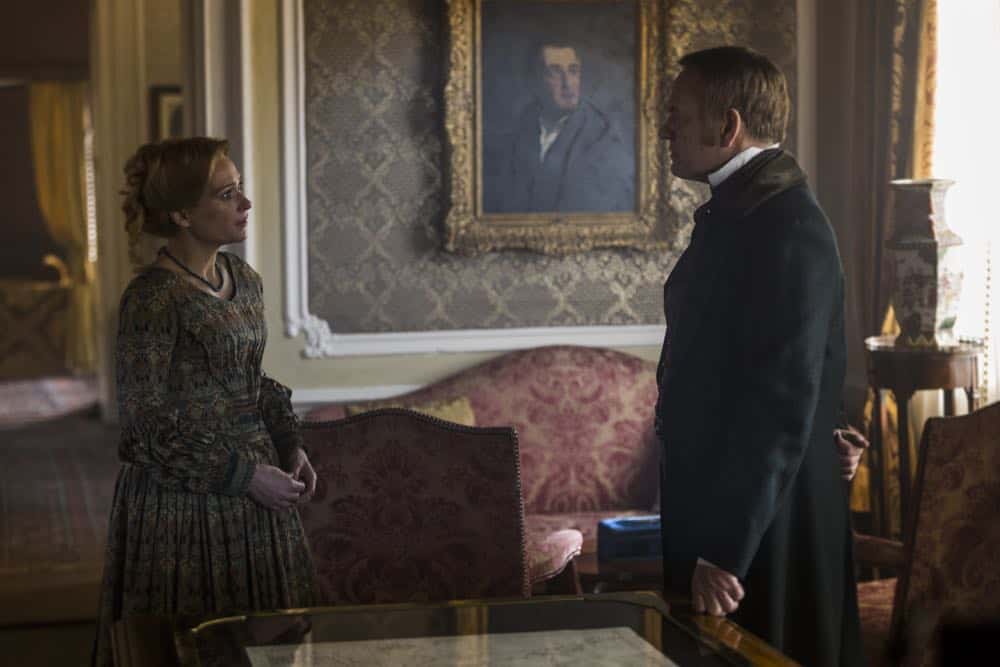
Captain Crozier was known to be melancholic for some time before the Franklin expedition was even formed. It was one of the reasons why he declined leadership of the expedition when Lord Haddington offered it to him. The reason is thought to be, as suggested in the show, rejection by the woman he loved; Sophia Cracroft.
Francis Crozier and Sophia Cracroft met, of all places, in Van Diemen’s Land in the summer of 1840. Sophia was Sir John Franklin’s niece, the daughter of one of his sisters, and she spent much of her adulthood living with him and his second wife; Lady Jane Franklin. In 1840 Crozier was captain of the Terror under Captain James Clark Ross for the latter’s expedition to the Antarctic. In August, Erebus and Terror docked in Van Diemen’s Land where they would remain until November. Both Captains and one of Terror’s Lieutenants, a nephew of Franklin’s, stayed at Government House as guests of Sir John Franklin.
During this time, Crozier fell completely in love with Sophia. Unfortunately for him, Sophia had fallen in love with Ross. Ross was already engaged to one Ann Coulman, with whom his letters show he was very much in love. This didn’t stop him from flirting with Sophia which earned him a reproach from Crozier who would go on to be his best man when Ross and Ann married three years later.
Erebus and Terror returned to Van Diemen’s Land on their way back from the pole the following year. While Crozier was too ill to stay with the Franklins, his affections for Sophia were undiminished. He went on to propose twice and both times was rejected. The show suggests that Sir John and his wife opposed the union and insisted that she reject him more firmly than they believe she has. While the reason for Sophia’s rejection is recorded as her not wishing to live the life of a naval captain’s wife, married to a husband who spent years at sea as a matter of course, we can reasonably assume that the Franklins discouraged it for all the reasons that had barred Crozier from command.
Goodsir, Hickey, and other seamen
Like the lead cast, the crew of Erebus and Terror are based on the actual named crew. However, as is standard for the times, we know little of the background and lives of the regular crew. We know as much of them as we do about the ship dog’s Neptune or the ship’s monkey Jacko. When it comes to caulker’s mate Cornelius Hickey, for example, we know that he was from Limerick and that he thought himself twenty-four when he signed onto Terror. Ages were less concrete during the nineteenth century so Hickey would have given his age as best he could before a time when things like birth certificates and registers were required. The show has him as a crazed antagonist, creating more havoc among the crew of the ships than the deadly spirit that hunts them. In fact, he isn’t even the real Cornelius Hickey. Instead, the real Hickey’s identity is adopted by a man who murdered him before the expedition sailed.
Hickey’s knife was one of the few items recovered by the Inuits and later given to the rescue expeditions, implying that Hickey was with the group at the end. We can assume the same of Doctor Stanley who immolates himself at the show’s halfway point. His name was found carved onto a piece of wood, presumably carved by himself.
Doctor Henry Goodsir plays a vital role throughout the show. He is the kinder of the doctors aboard the ship and popular with the men because of it. In history, he applied for the role of naturalist but ultimately he became one of the four doctors on the expedition, fulfilling the role of naturalist and librarian alongside it. During the journey, he started work compiling an Inuit to English dictionary. In the show, Crozier observes that he hopes Goodsir lives to complete it and that he, himself, lives to read it. We know that neither would and Goodsir’s remains were one of the few identified from those discovered on King William Island.
One of the most compelling scenes in the show’s finale is that of Lt. Edward Little who is found with his face pierced with several gold chains for reasons that Crozier and the viewer can’t discern. This scene was based on one of the stories told by the Inuits that initially found the camp known as Starvation Cove. One of the men was discovered with his face pierced with golden chains that moved his head when pulled and neither the Inuits who discovered it or the explorers to whom the tale was related could make any sense of it.
A Question of Tins
Goldner cheated us much worse than that, continued McDonald in front of a livid Captain Crozier and an angrily nodding Commander Fitzjames. He substituted cheap foods under labels that sold for much more on the handbill – regular ‘Stewed Beef’ under a label reading ‘Stewed Rump Steaks,’ for instance. The former is listed at nine pence, but he charged fourteen pence by changing the label.
The Terror – Dan Simmons
Something which has long endured in the stories surrounding the Franklin Expedition is that their supply of tinned food was contaminated which led to several deaths from lead poisoning. This theory was first put forward in response to the larger than average lead content discovered in the bodies of three of Franklin’s crew who died in the early stages of the expedition. In the show, we see the long-term cumulative effects of eating from the tainted tins. The men suffer from a range of complaints that start with fishing bits of lead from their mouths to full on insanity. This is aside from the very many tins that have to be discarded because their contents are putrid.
The Franklin Expedition left Britain with eight thousand tins of potatoes, meat, fruit, vegetables, and soup. Canning was a relatively new process that hadn’t been perfected. The manufacturer was new to the Royal Navy, having undercut the regular supplier. As a result, they had to rush the order for the expedition which led to cutting corners in a process that already had problems. We don’t know what specific problems the expedition had with their canned food supply but we do know the problems the naval victuallers had with the same. After the expedition left, many of the tins were found to have faulty seals which led to the contamination of the contents. In rushing the process, it’s thought that much of the food wasn’t cooked properly which at best could lead to food poisoning and at worst contained fatal botulism.
Remains of the expedition tested over the years have affirmed that the men were exposed to more lead than is typical. In recent years, however, it’s thought that this has less to do with the cans, faulty or otherwise and that the plumbing system aboard the ships might have contributed. Regardless, the additional lead isn’t thought to have been fatal. Instead, the men of the Franklin expedition are thought to have died from a variety of health problems exacerbated by the lack of fresh food and consistent harsh conditions. The lead poisoning wouldn’t have helped but hasn’t been found to have been the sole contributor to the fatalities.
Jane Franklin and the Rescues
Sir John Franklin’s wife, Jane, was ceaseless in her efforts to locate and rescue her husband. As is shown in the series, she approached the Admiralty some time before the expedition was officially declared lost in the hopes that they might send some relief. When the Admiralty refused, she set out to fund her own rescue missions with Sophia Cracroft at her side.
Her efforts were utterly relentless. She donated much of her own money to outfitting ships for exploration and rescue, she raised subscriptions, she encouraged her friends to donate, she organised lectures where the attendees were encouraged to subscribe or donate (such as those hosted by her good friend Charles Dickens). She travelled extensively and fostered such connections that while the Franklin expedition was an entirely British endeavour; the rescue became the focus of the world.
She was careful that the narrative never be one of finding men who had lost their way. Instead, they were great British heroes, venturing to expand the world’s knowledge. They could not be abandoned by their country and it was their duty to find them and return them. She garnered incredible public support which in turn put pressure on the Admiralty to act in finding the expedition themselves. Her efforts were so constant that her home at Bedford Place became known as ‘The Battery’.
Jane refused to accept that her husband was lost until incontrovertible proof had been discovered. Until then she refused the widow’s pension offered by the Admiralty and continued to write letters to her husband updating him on news of his family and keeping him abreast of gossip. She also relocated from London to the Scottish Highlands which was the closest point to the Canadian Arctic in Britain.
In total Jane launched seven expeditions to find her husband; two of which failed to make any headway towards the arctic. Her first expedition was launched in 1850 and her last in 1875. The final expedition set sail just a month before her death and returned some time after it. While the expeditions she funded discovered some evidence regarding the fate of her husband and his ships; they were also instrumental in charting the Arctic. Lady Jane herself was honoured for the navigational work undertaken in her name.
Proof that her husband was dead arrived in the 1850s but Jane continued to fund expeditions believing that somewhere there must be a cache of documents left by her husband or Crozier to explain what had happened. After her death, Sophia Cracroft continued her efforts but they were somewhat muted without Jane Franklin’s force of will. Hopeless romantic that I am, I must also mention that for every letter Jane sent to her husband, Sophia sent one to Crozier wishing him home again. She never married.
The Fate of the Expedition
Article II of the Admiralty’s instructions, ‘The two ships are on no account to separate,’ had been obeyed to the letter. Erebus and Terror had stayed together to the end. Now they were left to drift in the ice, empty and deserted, at the mercy of the elements.
Erebus: The Story of A Ship – Michael Palin
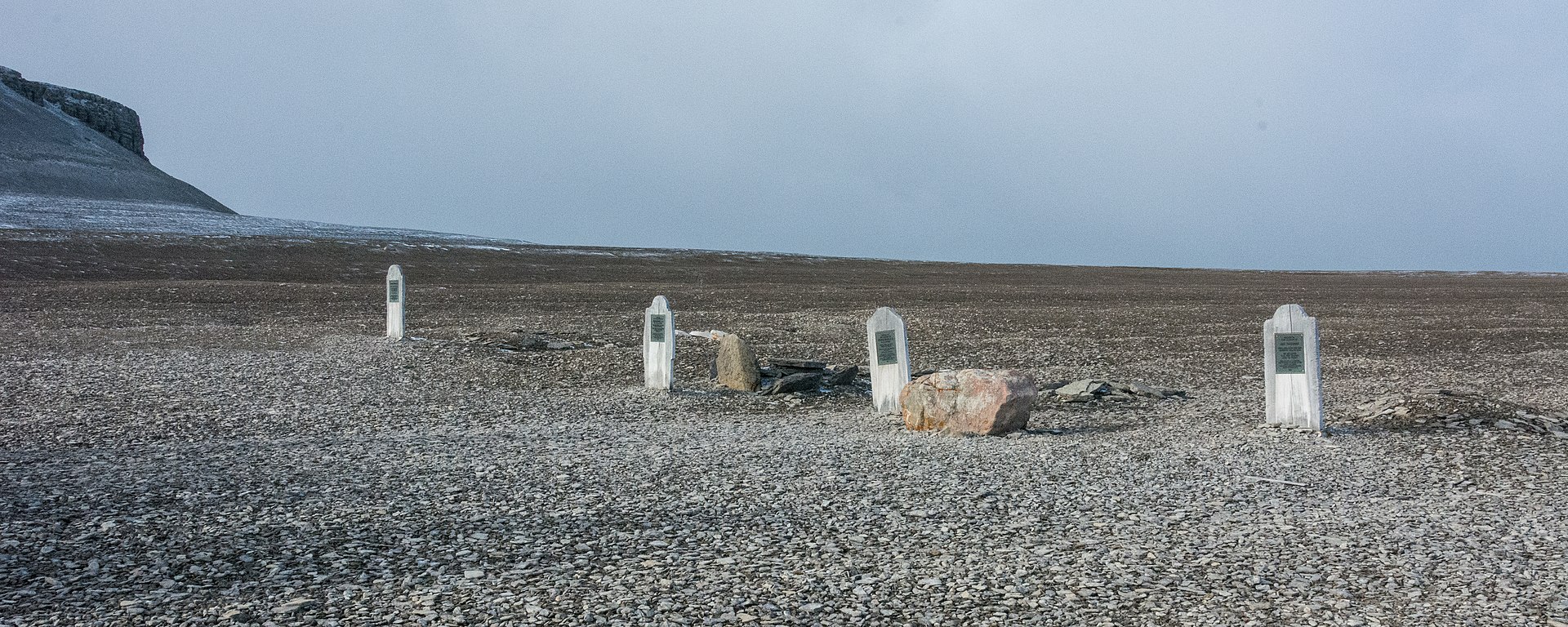
The ultimate fate of the Franklin expedition can’t be known for certain. We can only piece together what happened from archaeological evidence, the one document that survives the group, and Inuit testimony. The investigation continues to this day with testing on the various remains recovered over the centuries but we have a coherent idea of what happened to the expedition after the summer of 1845; the last time they were sighted by Europeans who could report back to the Admiralty in some form.
Erebus and Terror spent the winter of 1845-46 trapped in the ice around Beechey Island. Three of the crew died and were buried in graves dug on the island; Petty Officer John Torrington, Private William Braine of the Royal Marines, and Able Seaman John Hartnell. When the ice thawed, the expedition proceeded to King William Island in time for the ice to trap them again for the next winter. When the ice did not thaw enough to release them during the following summer they were trapped for another year and wouldn’t sail by human hand again.
We know from a note recovered many years later, that Sir John Franklin died on the 11th June 1847 but the circumstances of his death were not recorded. Around this time, back in England, Lady Jane Franklin was starting to express the first concerns that the expedition hadn’t been heard from in two years. The Admiralty, however, had expected long periods of silence and assured her that all was well.
In the Spring of the following year, with still no word from the expedition or anyone who had even sighted them, the Admiralty began to lay down the first plans for a rescue mission. As they were sitting down to discuss what could be done for the lost men, the men themselves were abandoning their ships. Erebus and Terror were still trapped in the ice that had frozen in 1846. They had been there for two years and were facing another year without reprieve. It was their third successive winter in the Arctic and the pressures must have been immense. Franklin was dead, six months of the year were spent in total darkness, and their fresh supplies had certainly run out leaving them open to scurvy and other illnesses.
When the first signs of Spring revealed themselves in the Arctic, Captain Crozier had his crews leave the ships and walk out onto the ice. Crozier’s intentions were recorded in the same note that informed the authorities that Franklin had died. He and his men would travel across the frozen sea ice, heading for the Canadian mainland; specifically Back River from where they could make their way to an outpost of the Hudson’s Bay Company. The hope was to make contact with the traders there who would be able to communicate with the Admiralty and provide them with supplies.
While Crozier and the men struggled across the ice, the Admiralty and Lady Jane Franklin planned their rescues. An overland search was organised from the Hudson’s Bay Company but the first attempts yielded nothing. It wasn’t until 1850 that the first sign of the lost expedition was discovered on Beechey Island. While searching the remnant camp the surgeon of the Lady Franklin Robert Goodsir, who had joined the rescue party in the hope of finding his brother, discovered the three graves and their occupants.
The initial excitement at the discoveries quickly dissipated when it became clear that there was nothing on Beechey Island that suggested where the expedition might have moved on to, and that there was nothing written from Franklin or any of the senior officers.
In 1852 without any official confirmation of Franklin’s loss, he was promoted from Captain to Rear-Admiral. It would be another two years before anything decisive regarding the expedition would be found. In 1854, the explorer John Rae returned to England after a year searching the Arctic for Franklin. During his journey, he had come across a party of Inuit who had told him about a party that sounded much like Crozier and his men. By the time Crozier (identified as the leader of the party) met the Inuit, his party was down to between thirty-five and forty men. The other hundred or so men had, for the most part, died on the journey.
Unlike the show which portrays Crozier and a handful of his officers either fluent or at least conversant in the Inuit language, the real Crozier didn’t have such a solid grasp. According to Rae, the leader managed to convey that their ships had been crushed and that they were heading South in the hope of hunting game. Crozier traded for some seal meat but with no means of communicating anything further they parted ways. When the Inuit returned the following spring, they discovered that despite evidence of cannibalism, the men had starved to death at their camp. Rae bought every relic the Inuits had recovered from the site and with his own supplies dwindling, he turned back for home rather than proceed to the site of the camp.
Back in England, Rae was careful in the report of his discovery. To the Admiralty, he told everything, including what he’d learned about cannibalism while the public received an edited tale that committed the more distressing details. Rae’s discretion came to nothing when the Admiralty accidentally gave a report complete with cannibalism to the press. The reaction was almost visceral and everything you would expect from a society that believed Englishmen could do nothing so barbaric while foreigners were the height of barbarism. Lady Jane Franklin never accepted the report, Charles Dickens was among the many voices who condemned Rae and the Inuits, and Rae was ostracised from society.
The Admiralty officially declared the Franklin expedition lost but Lady Jane continued to fund her own operations. Over the next decade, they would discover more evidence of the expedition ultimately confirming everything we now know; Franklin died, Crozier led the men out, and they ultimately starved en route or at the final camp which was at least where Crozier had intended it to be. In 1859 the only written record associated with the expedition was discovered; the Victory Point note, and since then archaeological investigations have revealed more and more about the lost expedition. Including the cannibalism. We’ll finish with the famous painter Edwin Landseer’s depiction of events ‘Man Proposes, God Disposes’ which at first glance, I mistook for Dan Simmon’s tuunbaq which hunts the Franklin expedition to their mutual end.
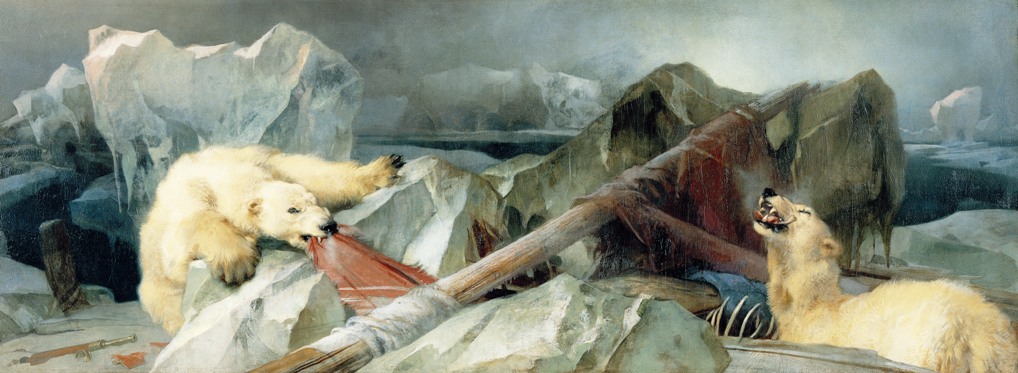
If you’d like to join me behind the scenes to explore the Inuit testimony and other interesting tidbits, you can support me via my Patreon.


